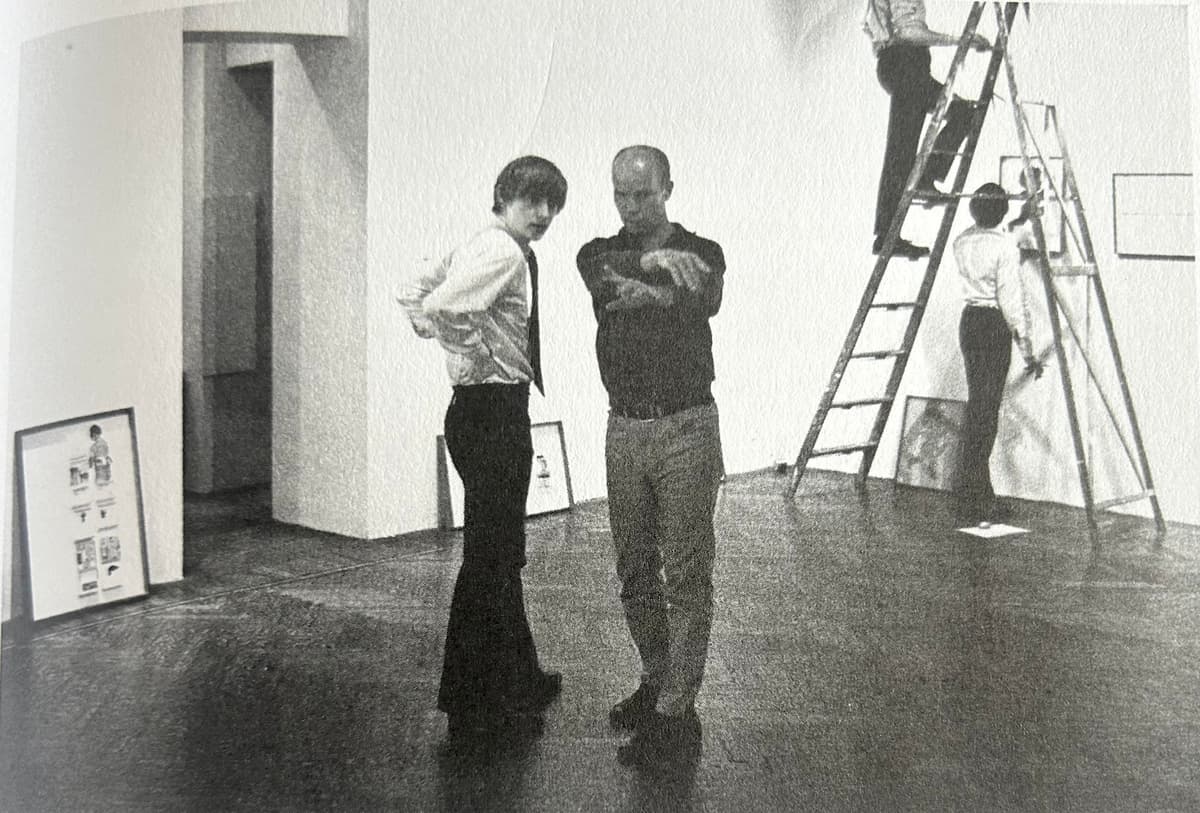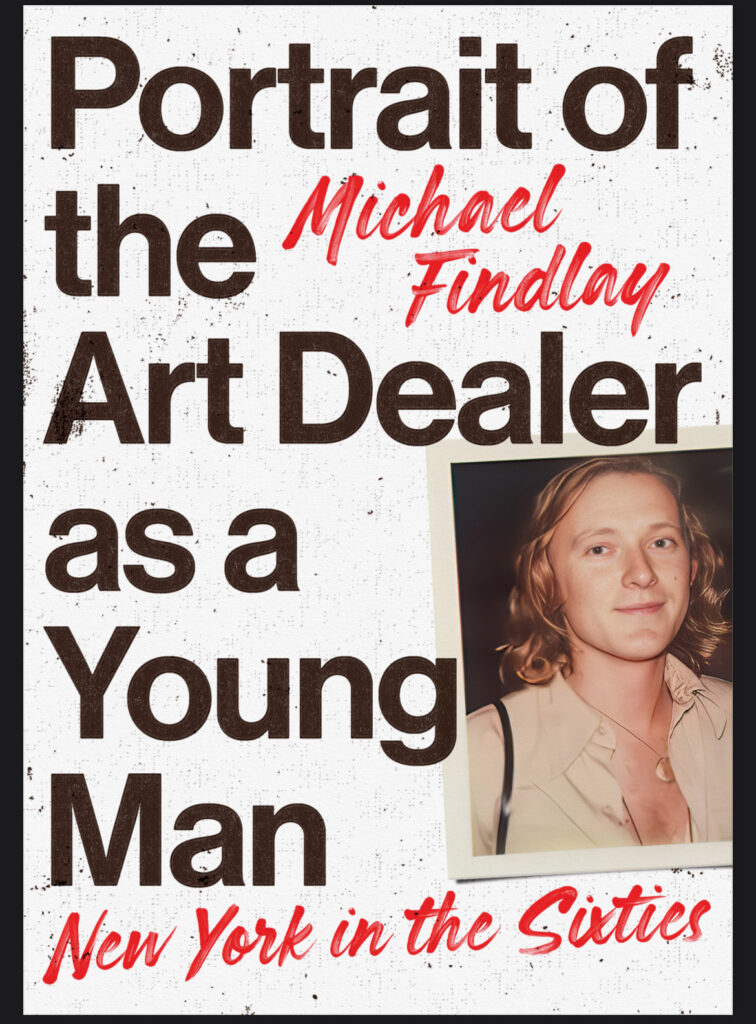Art Dealer Michael Findlay’s Rollicking Journey Through the 1960s New York Art Scene
The auction-driven art world of today bears little resemblance to the world that so generously received him, he says in autobiographical account.

‘Portrait of the Art Dealer as a Young Man’
By Michael Findlay
Prestel Publishing, 288 pages
There are individuals among us who live charmed lives, and then there is Michael Findlay. In his latest autobiographical account, “Portrait of the Art Dealer as a Young Man,” he takes readers along for a rollicking journey through the fabled days of New Yorks downtown art scene in the 1960s. A breezy, bantering tale of sheer luck, 1960s hijinks, inventiveness, and high art madness, he endearingly describes the artists, dealers, and collectors that turned the SoHo loft scene into a lasting hotbed of cultural and artistic innovation.
As a young boy from the United Kingdom, Mr. Findlay first had an eye opening encounter with Salvador Dali’s painting “Christ of Saint John of the Cross” at Glasgow’s Kelvingrove museum. A fascination with art and literature ensued, one that eventually landed him, via a scholarship to Toronto’s York University, in the eye of the Cyclone that was New York art world of the 1960s.
Just shy of 18, Mr. Findlay arrived at New York for a short visit, and, like so many others, decided to stay. An aspiring poet, he tried landing jobs at bookstores without success. A young woman friend suggested he could work at an art gallery. “I thought I could sit at the front desk with my Olivetti, type my poems, and smile at customers when they walked in” he recounts.
It was in this magnificently naive frame of mind he wandered into the Feigen gallery and emerged with his first art job, one that would last for more than a decade and cement his position as a top New York art dealer. He had stumbled upon his avocation, and he lapped up art dealing wisdom from his new boss.
“Richard Feigen was a tremendous talker.” Mr. Findlay remembers. “He really had the gift of gab. The things I learned listening in to him on his office phone. He would say anything, true, false and in between, to sell a picture.”

Feigen gallery represented emerging British Pop artists at the time of Mr. Findlay’s arrival. Many would become close friends. The gallery also dealt in an impressive secondary roster of impressionist and post war artists, whose sale funded shows for emerging talent. In the meantime, Mr. Findlay was continuously learning.
It was a scene so saturated with talent he couldn’t help but learn. During his first two years at Feigen, Mr. Findlay would meet Roy Lichtenstein, Jasper Johns, Bridget Riley, Robert Rauschenberg, John Baldessari, Hannah Wilke, and Andy Warhol, to name a few. The number of art history makers and influencers in his immediate orbit was staggering.
Mentors were also plentiful. Aside from Feigen, the gruff Caribbean curator and eventual director of the Jewish Museum, Kynaston McShine, helped Mr. Findlay develop the knowledge he needed to keep his job and curate his first show at 19. “I probably learned the most from him” he says. This was eventually parlayed into Mr. Findlay’s eclectic and groundbreaking shows as Feigen’s director, where he introduced the world the enigmatic collage artist Ray Johnson, fiber artist Claire Zeisler, and Fluxus giant Joseph Beuys. The wilder, more conceptual and performative the work, the better.
There was also an exhaustive nightlife. With his lanky good looks and Mod British style, Mr. Findlay found himself dating models and It girls, even moonlighting as a model himself. Max’s Kansas City, just opened by Mickey Ruskin, was the premiere artist and cool person hangout.
“Before it was a rock n roll club upstairs, Max’s was for the art crowd.” Mr. Findlay recalls. “Ruskin was incredibly generous. Anyone who gave him art would eat and drink for free, often for years, so it was a popular spot.”
Mr. Findlay nearly altered a landmark New York establishment himself. He almost invested in a derelict tavern called The Stonewall Inn, which would later be the epicenter of the historic Stonewall riots and change LGBTQ history forever. Mr. Findlay had with the intention of turning it into a swinging London style club called “At” with his friends. During negotiations, their future landlord calmly placed a revolver on the table, and they lost interest. “You couldn’t open a night spot in the Village without the mob.” He says, chuckling wryly.
Mr. Findlay insists that dealing with art world characters and glitterati, both famous and shady, wasn’t as glamorous as it sounds. “Sure, I knew individuals who are now extremely well known, but we had no idea they would be at the time,” he says. “Warhol to me just seemed to me a clever, extremely hard-working man who I saw around, nothing more. And there were names very big at the time who are virtually unknown now.”
Mr. Findlay parted ways with Feigen in 1972, striking out on his own. He continued to be a lynchpin and a social force in the New York art world. He would throw the star-studded birthday party for a 35-year-old David Hockney, and acquire the “wild” coyote for Joseph Beuys’s historic performance, “I like America and America Likes Me.” He would also marry African American Supermodel Naomi Sims.
What does it all mean to Mr. Findlay now, looking back through the lens of his charming memoir? He insists that the auction driven art world of today bears little resemblance to the world that so generously received him. He also believes the marriage of art and fashion, very exciting at first, has unfortunately led to a lot of money driven vacuity.
“It was very welcoming and collegial when I joined,” he recalls, “Friendly but serious. It was not glamorous, nor based on money. We were off in our own little world, pursuing our interests. There were no art consultants. Everyone hung out and big collectors actually set foot in galleries and spoke to you personally. We never used the term ‘art market.’ If anyone had mentioned that phrase at a party, everyone would have giggled. Now, that is what it is called.”

